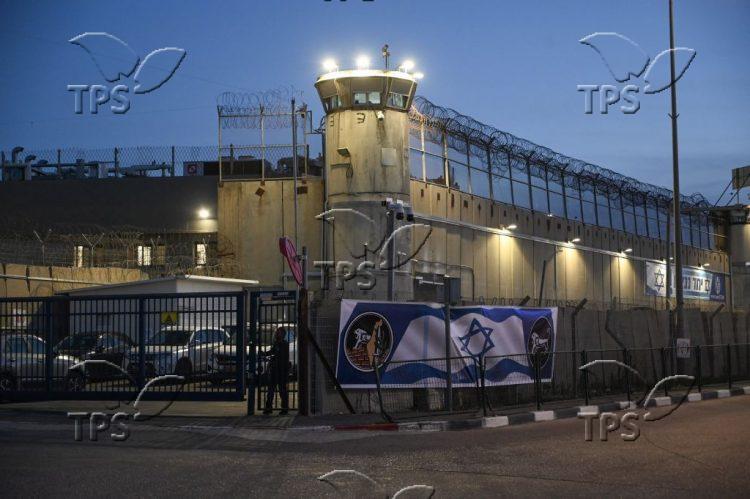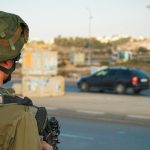The Bloody Legacy of Deported Palestinian Terrorist Ahmed Barghouti
Jerusalem, 19 February, 2025 (TPS-IL) -- Of the 952 imprisoned Palestinian terrorists released by Israel in a ceasefire with Hamas, Ahmed Barghouti. Barghouti, now 48, was serving 13 life sentences for masterminding a series of terror attacks that killed 12 Israelis during the Second Intifada.
Born in 1976 and raised in the Ramallah-area village of El-Bireh, by 1997, he was a driver and senior aid to Marwan Barghouti, a relative who was the overall commander of Fatah’s Al-Aqsa Martyrs Brigades. Marwan Barghouti is regarded by many as a potential successor to Palestinian Authority President Mahmoud Abbas.
Ahmed Barghouti joined the Palestinian police in 1999 while participating in shooting attacks on soldiers in the Ramallah area. In 2001, he was elevated to Marwan Barghouti’s bureau chief who directed and coordinated numerous attacks.
His terror spree began in 2002.
On January 17, 2002, three terrorists were arrested while traveling from Nablus to Ramallah, where they were supposed to meet Barghouti. Following their meeting, they had planned to continue to Jerusalem to carry out a suicide attack. Just days later, on January 22, a shooting spree on Jaffa Street in Jerusalem resulted in the deaths of two Israelis and left 37 others wounded.
Barghouti’s wave of terror continued with a Feb. 25, shooting attack in Jerusalem’s Neve Yaakov neighborhood in which a policewoman was killed and nine other people were injured. Two days later, an Israeli was murdered at a coffee factory in Jerusalem’s Atarot industrial zone. That same day, a suicide bomber sent by Barghouti injured two policemen at the Maccabim checkpoint in central Israel.
On March 5, Al Aqsa Brigades terrorist Ibrahim Hasouna opened fire on Israelis at Tel Aviv’s Seafood Market restaurant, killing three and injuring 31. Two days later, security forces intercepted a suicide bomber dispatched by Barghouti wearing an explosive belt, along with his handler. On March 27, Israeli security forces intercepted an ambulance delivering a bomb belt to Ramallah for Barghouti.
Furthermore, he had planned to send an additional suicide terrorist, who was ultimately arrested when the Israel Defense Forces (IDF) entered Ramallah.
Israeli authorities repeatedly submitted Barghouti’s name to the Palestinian Security Services, but they refused to arrest him and even tipped off Barghouti about Israeli efforts to arrest him. Israeli soldiers finally caught him on April 15, 2002. On July 30, 2003, a military court convicted Barghouti of masterminding attacks that killed 12 Israelis and sentenced him to 13 life sentences.
Barghouti was freed on Feb. 15 and deported to a third country as part of the temporary ceasefire with Hamas.
During his time behind bars, Barghouti collected $338,00 in “salary” paid by the Palestinian Authority to imprisoned terrorists, according to Itamar Marcus, director of the Jerusalem-based Palestinian Media Watch.
The ongoing first phase of the ceasefire is supposed to see a total of 33 Israeli hostages freed over six weeks in exchange for up to 1,904 Palestinian terrorists imprisoned in Israel. The exact number will depend on how Israeli captives are alive. Hamas notified Israeli authorities in January that of the 33, eight are dead, but offered no evidence. Hamas is due to release the bodies of four hostages on Thursday and six living captives on Saturday.
Since the first hostage release on Jan. 19, Hamas has freed 19 Israeli and five Thai captives in exchange for 952 imprisoned Palestinian terrorists.
The fate of the remaining 65 hostages will be determined by negotiations during the ceasefire’s second phase. Critics say the phased approach condemns these 65 hostages to open-ended captivity and undermines Israel’s war gains.
At least 1,200 people were killed, and 252 Israelis and foreigners were taken hostage in Hamas’s attacks on Israeli communities near the Gaza border on October 7. Of the 73 remaining hostages, more than 30 are believed to be dead.







